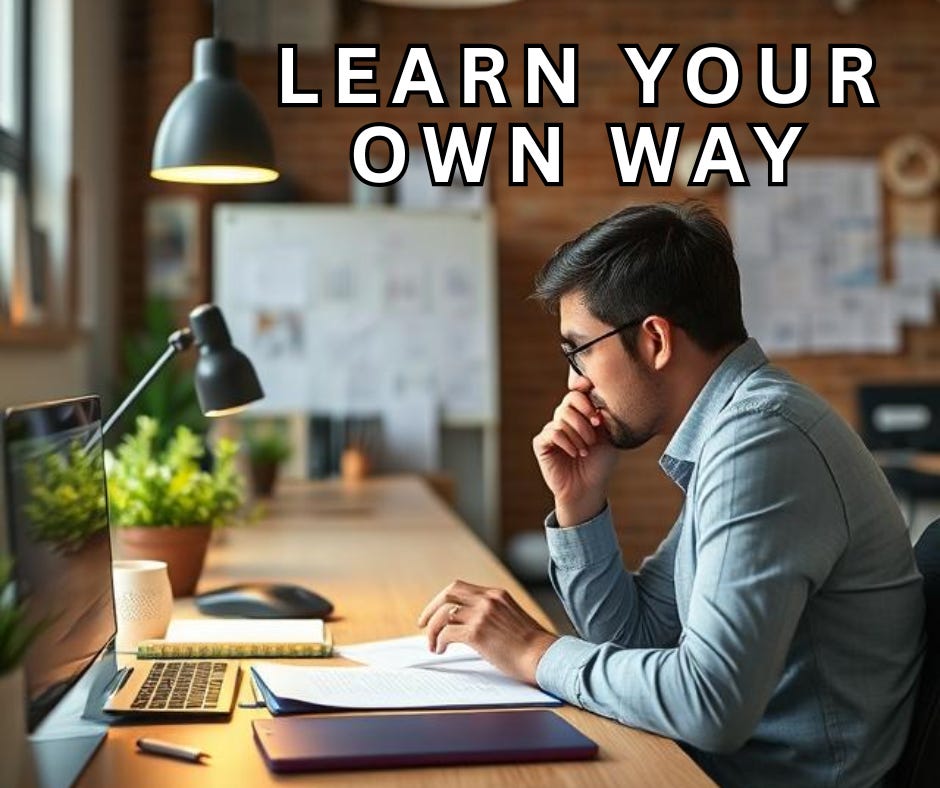The Blundering Learner: Learning by Doing It Your Own Way
Learning isn’t just about taking in information—it’s about using it.
Learning isn't about waiting until you have the "right" method or the perfect set of instructions—it's about diving in, making mistakes, and discovering the intricacies of what you're trying to master. This might sound intimidating, especially if you already know what challenges lie ahead. Fear of failure can be paralyzing, keeping you from even startin…


